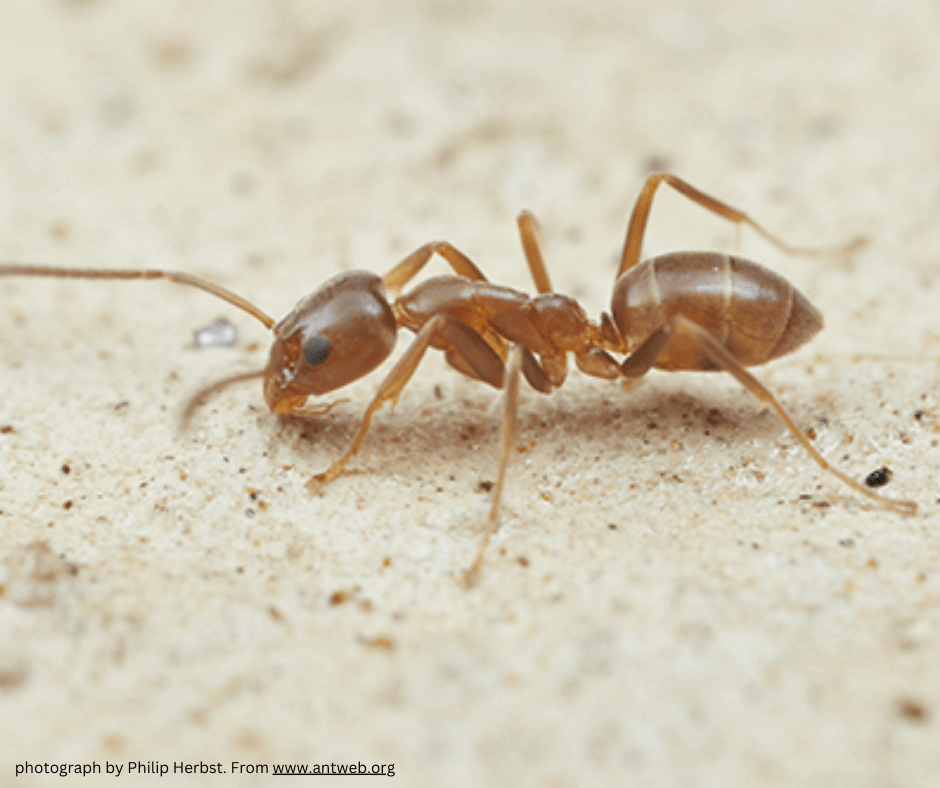Argentine Ant
Linepithema Humile
Argentine Ant Stats
Color: They range from light to Dark brown
Size: Workers are typically 2.6 - 3.2 mm in length
Shape: Slim, with a one-segmented petiole and a smooth, shiny body
What is an Argentine Ant?
Argentine ants come from South America, in places like Argentina and Brazil. They spread to other parts of the world in the 1800s by traveling on ships. Now, they live in many places, including the United States. Argentine ants make large colonies and work well together, which helps them take over new areas. They first came to the U.S. in the early 1900s and are now common pests, especially in warm states like California and Florida.

Where Do Argentine Ants Live?
Argentine ants like to live in places that are moist and near food. You can find them in soil, under rocks, in logs, and sometimes inside buildings. They might be in your garden, around your home’s foundation, and even inside walls and insulation.
What do Argentine ants eat?
Argentine ants eat many kinds of food. They love sweet foods, like honeydew from aphids, and they also enjoy proteins. You might see them in your kitchen looking for sugary treats or other food crumbs.
How do Argentine ants behave?
Argentine ants are very social and make big colonies with many queens. They work together and can form supercolonies. When they look for food, they make long trails and can travel far from their nest to find what they need.
How do Argentine ants reproduce?
Argentine ant colonies have lots of queens who lay eggs. This helps their numbers grow quickly. The colonies can have a few hundred to several thousand ants, making them spread easily.
How can you control Argentine ants?
To control Argentine ants, you should first get rid of moisture sources and seal entry points around your home. Remove any food they might like, and use baits and insecticides to get rid of their colonies.
How do Argentine ants impact humans?
Argentine ants can be a problem when they come inside looking for food. They can make your food dirty and sometimes cause minor damage by nesting in walls and insulation. Their big colonies can make them hard to control, but with the right steps, you can keep them away.
Explore More Ants
Our Pest Control Service Areas
Let us help you eliminate these pests!
We treat your home or office as if it were our own!



